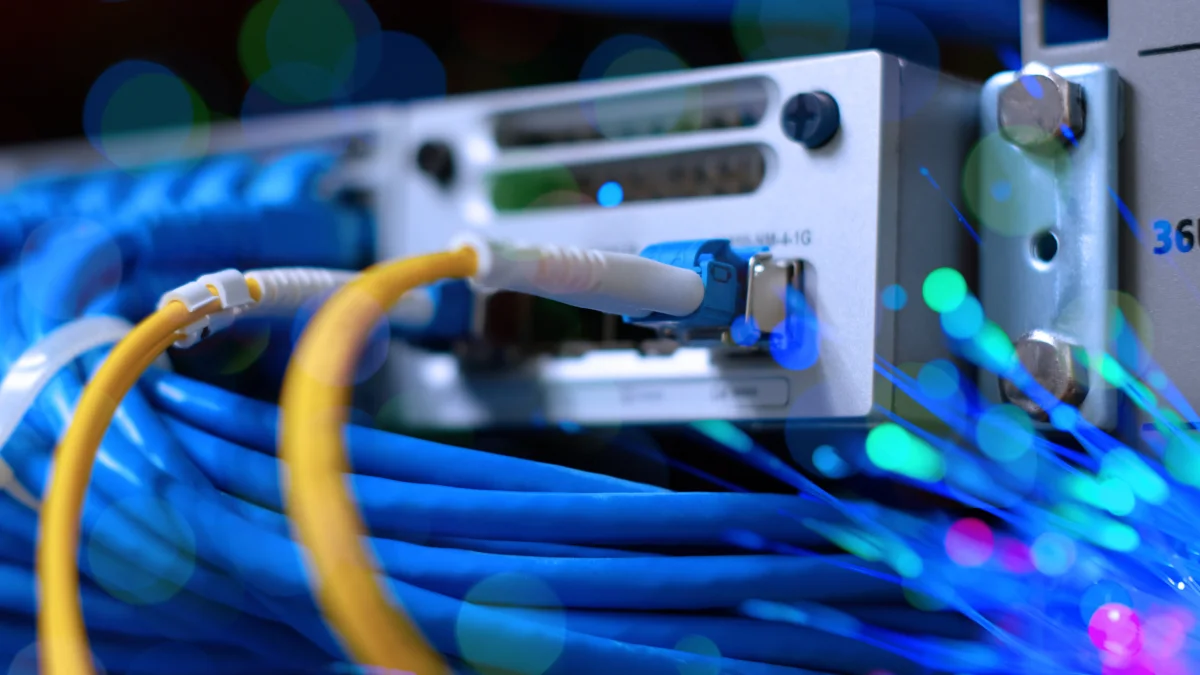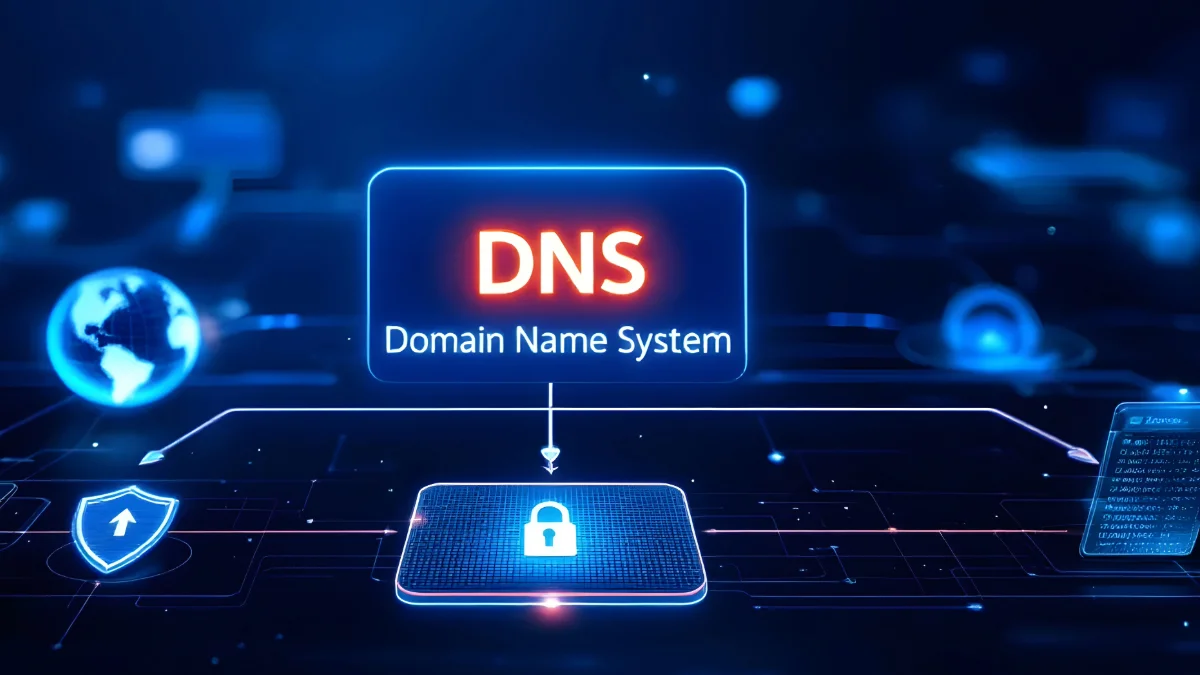1.
What is DHCP?
DHCP stands for Dynamic Host Configuration Protocol. It’s a protocol that automatically assigns IP addresses and other network settings to devices in your network. In other words, the answer to the question “What is DHCP?” is: it’s a system that automatically assigns each device—like computers, phones, tablets, and printers—an IP address, subnet mask, gateway, and DNS server settings. This eliminates the need to manually configure IP addresses and ensures that all devices communicate correctly within the network. It simplifies network management and boosts both efficiency and security—especially in large, dynamic environments.
Advantages of Using DHCP
After answering what is DHCP and what does it do, let’s look at some of its main benefits:
- Automatically assigns IP addresses to devices in the network, saving time.
- Simplifies network management and minimizes human error.
- Prevents IP conflicts between devices.
- Facilitates quick connection of new devices to the network.
- Reduces the workload in large and complex networks.
- Enables centralized management of IP addresses.
- Supports efficient use of IP addresses with lease durations.
- Makes it easier to apply configuration changes across the network.
What is a DHCP Server?
So, what is a DHCP server? A DHCP server is the system responsible for assigning and managing IP addresses. This could be a local server like a modem or router, or a cloud-based DHCP server. It assigns an IP address to a device as soon as it joins the network and keeps a record of it.
2.
How Does DHCP IP Assignment Work?
DHCP is a communication protocol that automatically assigns IP addresses and necessary network information to devices on the network. The question “What does DHCP mean?” essentially means automated network management. Instead of manually configuring IPs, an administrator enables DHCP, allowing devices to receive the correct settings as they connect.
The process begins when a device sends a “DHCP DISCOVER” message upon joining the network. The DHCP server receives this message, checks for available IPs, and sends back an “OFFER.” If the client accepts (REQUEST), the server finalizes the assignment with an ACK, and the device can then use that IP address for the lease duration.
Enabling DHCP is typically done via the router or modem's admin panel in local networks. You activate the “DHCP Server” option and define the IP pool, subnet mask, gateway, and DNS information. In cloud infrastructures, virtual DHCP servers manage this process, making IP management seamless across data centers and multi-location networks. IP distribution is centrally controlled, dynamically updated, and quickly responsive to changes. In scalable cloud systems, adding a new device or server is just a few clicks away with no risk of IP conflicts.
Another benefit of cloud DHCP is its integration with security policies. Features like “DHCP Snooping” block rogue DHCP servers from assigning IPs. Logging and reporting tools make it easy to track which device used which IP and for how long. This simplifies troubleshooting and improves response to potential attacks. Whether on-prem or cloud-based, a well-configured DHCP setup streamlines network management, boosts efficiency, and enhances security.
How to Enable DHCP
- Log in to the admin panel with your credentials.
- Navigate to the network or LAN settings section and find the “DHCP Server” option.
- Enable the DHCP Server feature.
- Define the IP address range (e.g., 192.168.1.100 – 192.168.1.200).
- Set the subnet mask, default gateway, and DNS server addresses.
- Save the changes and reboot the device if necessary.
What is DHCP Snooping?
DHCP Snooping is a network switch feature used to enhance security. Its main goal is to block unauthorized DHCP servers from distributing IP addresses. When enabled, only responses from trusted ports are allowed, and others are blocked. This prevents unauthorized devices from disrupting the network. DHCP snooping configuration is typically done via managed switches or network security appliances, where trusted ports are manually defined.
Benefits of Using Cloud-Based DHCP
- Centralized IP management without physical hardware.
- Single-point control for multi-office IP distribution.
- Scalable structure allows quick and easy device/server additions.
- Automatically prevents IP conflicts, ensuring continuous operations.
- Applies real-time updates and changes across the network.
- Advanced logging helps monitor IP usage history.
- Security features like DHCP Snooping block rogue IP distribution.
- Reduces maintenance and operational costs while boosting efficiency.
3.
What Happens If DHCP Is Disabled?
So, what happens if DHCP is turned off? Devices won’t receive IP addresses automatically. Each device would need manual configuration of IP, subnet mask, gateway, and DNS—which is time-consuming and error-prone. In large networks, disabling DHCP can cause IP conflicts, connection issues, and inefficiency. It also complicates onboarding new devices. Enabling DHCP allows secure, automatic IP assignment, simplifying management and improving overall performance.
4.
Cloud-Based DHCP Management
Unlike traditional networks, cloud-based DHCP uses virtual platforms and operating systems for IP distribution. This enables centralized management of DHCP across geographically distributed offices or data centers. These systems are highly scalable and flexible, adapting as the network grows. Updates and configuration changes are applied instantly, ensuring fast and accurate IP management. With security features like DHCP snooping, these systems also prevent unauthorized IP assignments and maintain network integrity. Ultimately, cloud DHCP simplifies network administration, reduces costs, and increases operational efficiency in modern IT environments.
Also, check out our article on Hosting Types.


























